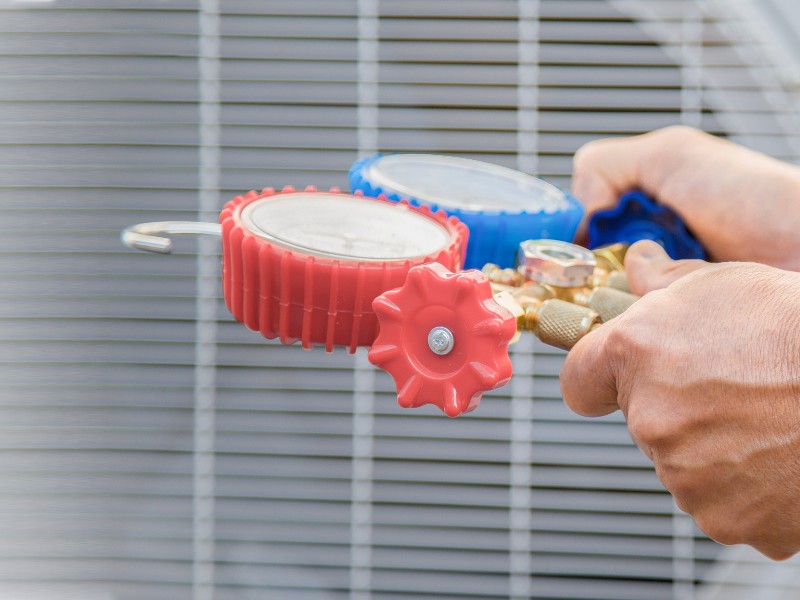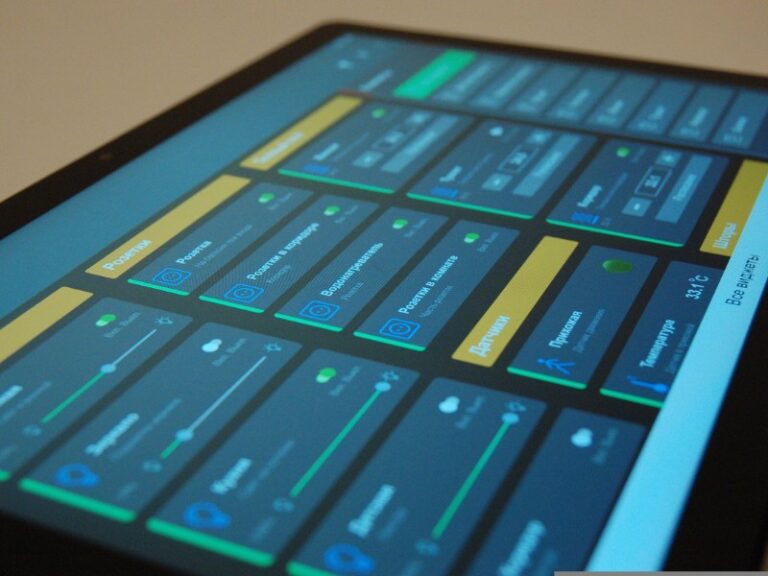The HVAC (Heating, Ventilation, and Air Conditioning) industry is undergoing significant changes, and one of the most impactful shifts is the transition to more environmentally-friendly refrigerants. As concerns over global warming and ozone depletion continue to grow, there is an increasing push for refrigerants with lower environmental impact. These changes are shaping the future of HVAC systems by improving energy efficiency, reducing carbon footprints, and ensuring compliance with evolving regulations.
In this article, we’ll explore the latest trends in refrigerants, the driving forces behind these changes, and the role of new refrigerants in making HVAC systems more sustainable and efficient.
The Role of Refrigerants in HVAC Systems
Refrigerants are substances used in HVAC systems to absorb and release heat, enabling air conditioners and refrigeration units to provide cooling. Traditionally, refrigerants like CFCs (chlorofluorocarbons) and HCFCs (hydrochlorofluorocarbons) were widely used in cooling systems. However, these substances were found to have severe environmental impacts, especially in contributing to ozone depletion and increasing global warming potential (GWP).
As a result, regulations such as the Montreal Protocol (1987) and the Paris Agreement (2015) have called for a gradual phase-out of harmful refrigerants in favor of more environmentally friendly alternatives.
Why the Shift in Refrigerants?
The shift towards more sustainable refrigerants in HVAC systems is driven by several factors:
- Environmental Regulations: International agreements like the Montreal Protocol aim to phase out ozone-depleting substances and reduce GWP. Countries are adopting stricter regulations on refrigerant usage to combat climate change.
- Energy Efficiency: New refrigerants are designed to enhance the energy efficiency of HVAC systems, which helps reduce operating costs and carbon emissions.
- Consumer Demand: With increasing awareness of climate change, consumers are seeking more sustainable and energy-efficient HVAC solutions for homes and businesses.
- Technological Advances: The HVAC industry has made significant advancements in refrigerant technology, allowing for the development of alternatives that maintain or even improve system performance while reducing environmental impact.
Latest Trends in Refrigerants
1. Transition to Low-GWP Refrigerants
One of the most significant trends in the HVAC industry is the shift to low-GWP (Global Warming Potential) refrigerants. GWP is a measure of how much a refrigerant contributes to global warming compared to carbon dioxide. The goal is to reduce the GWP of refrigerants while maintaining or improving system efficiency.
- Hydrofluoroolefins (HFOs): HFOs are a newer class of refrigerants that offer a significantly lower GWP than traditional refrigerants like R-134A and R-410A. HFOs, such as R-1234yf, are already being used in automotive air conditioning and are expected to be more widely adopted in HVAC systems.
- Key Benefits: Low GWP, non-ozone-depleting, high energy efficiency.
- Natural Refrigerants: Refrigerants like carbon dioxide (CO2), ammonia (NH3), and propane (R-290) are gaining popularity due to their zero Ozone Depletion Potential (ODP) and low GWP. These natural refrigerants have a long history of use in refrigeration and industrial applications and are increasingly being adapted for HVAC systems.
- Key Benefits: Environmentally friendly, non-toxic, and energy-efficient.
- Azeotropic and Near-Azeotropic Mixtures: These refrigerants combine two or more substances to create a blend with a lower GWP. Azeotropic mixtures act as a single substance during phase changes, providing stability and reducing environmental impact.
- Example: R-452B is a blend that is gaining traction as a replacement for R-410A, with a lower GWP and higher efficiency.
2. The Rise of Carbon Dioxide (CO2) Refrigerants
CO2 (R-744) is emerging as one of the most promising refrigerants for HVAC systems. With a GWP of 1 (compared to hundreds or even thousands for traditional refrigerants), CO2 is a natural refrigerant that has zero ozone depletion potential and is non-toxic.
- How It Works: CO2 refrigerant operates at high pressure and requires special system designs, such as transcritical CO2 systems, to handle the higher pressures and temperatures. However, CO2 systems offer excellent energy efficiency, especially in cooler climates.
- Benefits:
- Sustainability: Zero ODP and low GWP.
- Efficiency: CO2 systems provide excellent performance in refrigeration and heating applications, particularly in commercial refrigeration and heat pump systems.
- Adoption in Supermarkets: Many supermarkets are adopting CO2-based refrigeration systems to reduce their carbon footprint.
- Challenges:
- High Pressure: The system requires specially designed components to handle the high operating pressure.
- Initial Investment: CO2 systems tend to have higher upfront costs due to the specialized equipment required.
3. The Role of HFOs in Air Conditioning
Hydrofluoroolefins (HFOs) are rapidly gaining ground as a low-GWP alternative to traditional refrigerants like R-134A and R-410A. R-1234yf, an HFO, has already been adopted in the automotive industry and is now seeing increasing use in air conditioning systems for residential and commercial applications.
- How It Works: HFOs are designed to provide similar performance to traditional refrigerants but with much lower environmental impact. These refrigerants break down in the atmosphere more quickly, reducing their long-term impact on global warming.
- Benefits:
- Low GWP: HFOs have a much lower GWP compared to older refrigerants, making them more sustainable.
- Compatibility: Many HFOs are compatible with existing HVAC systems, allowing for easier transitions to greener alternatives.
- Challenges:
- Higher Cost: While HFOs are better for the environment, they tend to have a higher initial cost compared to older refrigerants.
- Flammability: Some HFOs, like R-1234yf, are mildly flammable, which may pose safety concerns in certain applications.
4. Regulatory and Industry Shift Towards Environmentally Friendly Refrigerants
As global regulations tighten, HVAC systems are increasingly designed to meet the standards set by international agreements such as the Montreal Protocol and the Kigali Amendment, which focus on phasing out high-GWP refrigerants.
- The Kigali Amendment (2016) aims to phase down the use of hydrofluorocarbons (HFCs), which have a high GWP, and promote the use of low-GWP alternatives.
- New Regulations: The European Union’s F-Gas Regulation and U.S. EPA’s SNAP program have put pressure on HVAC manufacturers to adopt low-GWP refrigerants. These regulations ensure that HVAC systems are more environmentally friendly while still maintaining optimal performance.
How CoolCalc Can Help with Refrigerant and HVAC System Design
CoolCalc is a powerful tool for HVAC professionals that helps with accurate cooling load calculations and selecting the right refrigerants for the job. By considering factors like building layout, local climate, and system requirements, CoolCalc helps ensure that the HVAC system is properly sized and optimized for maximum efficiency with low-GWP refrigerants.
- CoolCalc Features:
- Accurate load calculations for determining refrigerant requirements.
- Energy-efficient system design that aligns with the latest refrigerant trends.
- Customization options that allow users to select appropriate refrigerants based on the building’s specific needs.
Conclusion
The latest trends in refrigerants are transforming HVAC systems by making them more sustainable, energy-efficient, and environmentally friendly. With growing concerns about climate change, the HVAC industry is moving towards refrigerants with lower global warming potential (GWP), such as HFOs, CO2, and natural refrigerants. These changes are not only driven by environmental regulations but also by the need to reduce energy consumption and operational costs in HVAC systems.
By understanding these trends and utilizing tools like CoolCalc, HVAC professionals can ensure they’re selecting the right refrigerants for their systems and optimizing performance for a sustainable future.
As the industry continues to evolve, the transition to greener refrigerants will play a critical role in reducing the environmental impact of HVAC systems, while maintaining the comfort and efficiency that modern buildings require.




